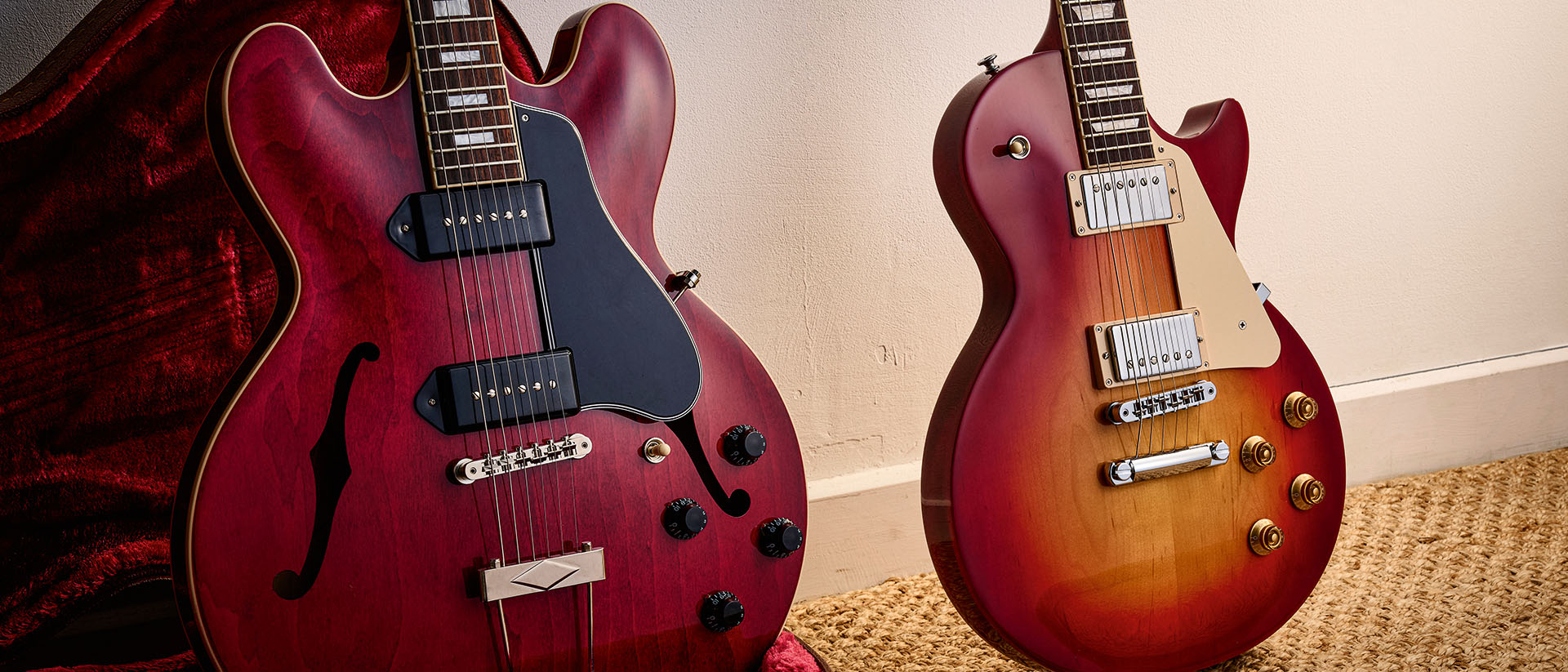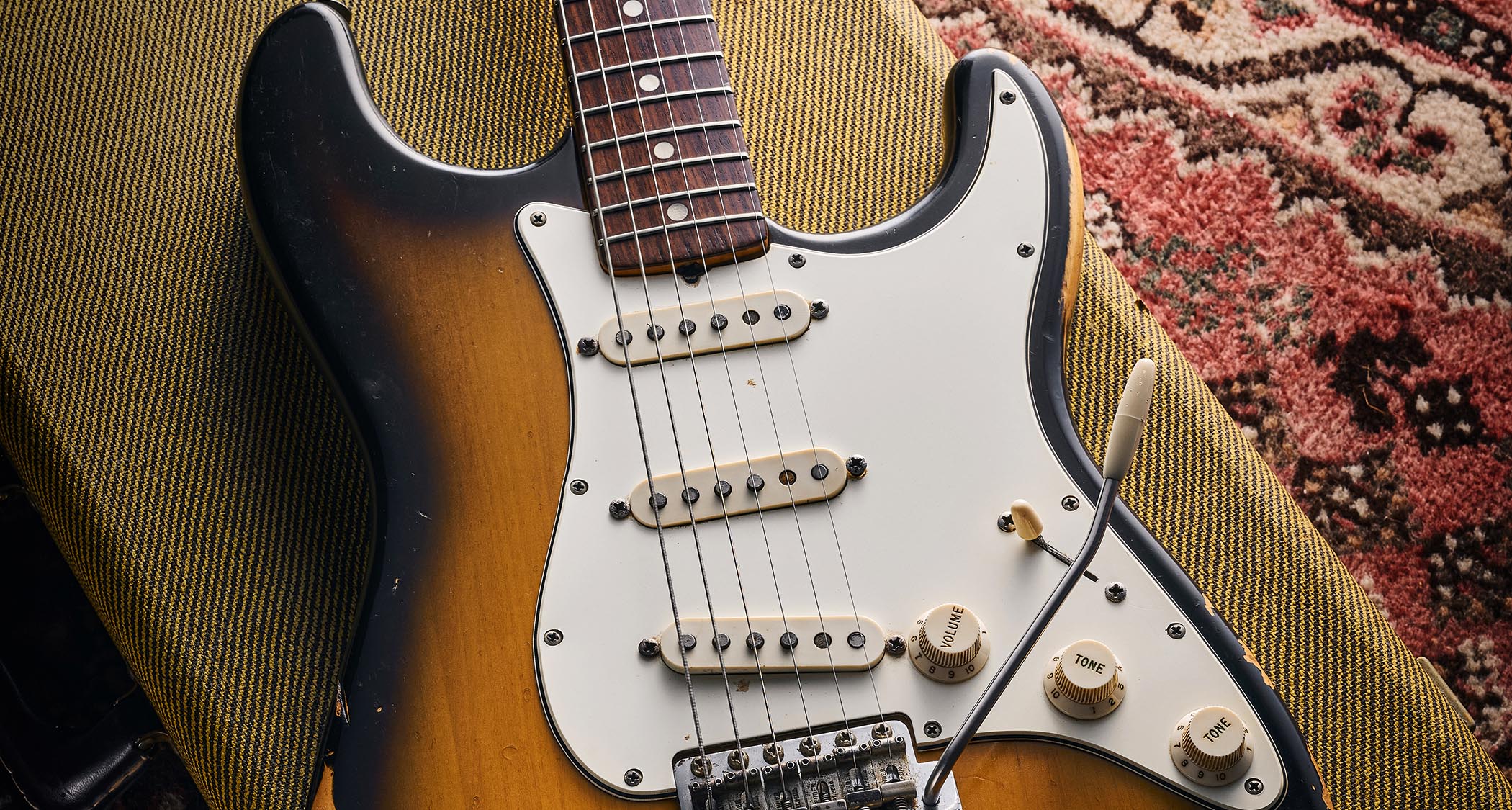Guitar World Verdict
We love it when Gibson gets it right. The ES-330 certainly deserves another shot at the spotlight; it’s just such a usable instrument. It plays like butter and is packed with a fabulous range of recognisable tones. The Studio’s classic big and thick voicing is archetypal Les Paul in anyone’s book, and along with a great weight there’s little to complain about.
Pros
- +
Super build quality and attention to detail.
- +
Excellent weight and playability.
- +
Superb, giggable sounds.
Cons
- -
Visually, we miss the body binding on the Studio.
- -
At high volume, the ES-330 prone to feedback.
You can trust Guitar World
What are they?
Trying to keep up with Gibson’s avalanche of new releases is becoming a full-time job: blink and you might miss something.
For example, hot on the heels of the Les Paul Modern Studio released earlier in 2024 is this new Studio, and a third Studio variant, the Studio Session, landed in December 2024.
After the success of the US-made Epiphone Casino reissue from 2023, it was almost inevitable that Gibson would follow up with its own branded version of essentially the same guitar.
It’s great to have the ES-330 return at a time when its charms might be better appreciated than back in those blues-rock salad days. Let’s take a closer look…
ES-330
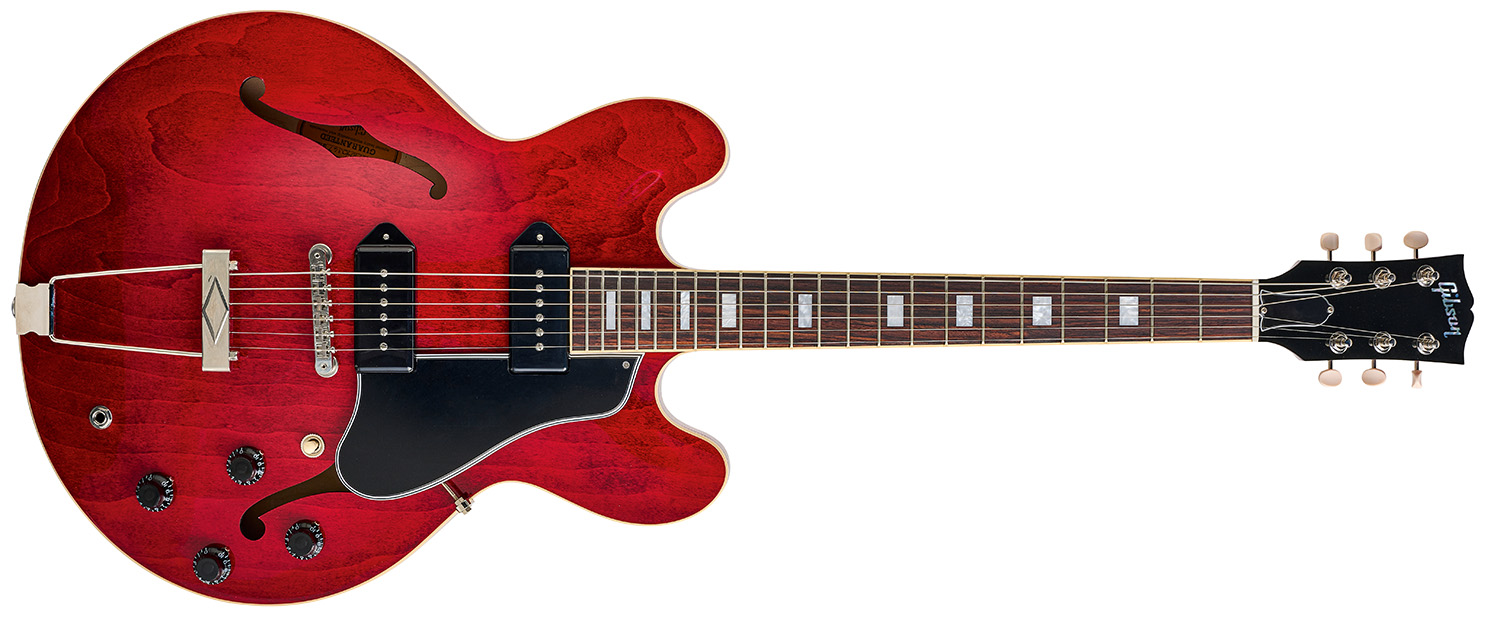
Gibson ES-330: ★★★★1/2
What compromised the ES-330’s popularity was that – due to it being a fully hollow construction, with no centre block as in the ES-335 – it was a feedback nightmare through big, loud amplifiers.
And since its neck sat further into the body than its semi-solid sister models, top-fret forays were off the agenda. But with today’s move towards smaller amps, in-ear monitors and less of a desire for dusty end widdle-fests, these woes pale against the instrument’s super-light weight, ultra-comfy neck, effortless playability and seriously cool vibe.
All the latest guitar news, interviews, lessons, reviews, deals and more, direct to your inbox!
Checking the guitar over reveals a beautifully built instrument in the period-correct shade of see-through cherry red, the thin-skin nitro lacquer expertly applied and buffed to a perfect gloss. The body’s arched top and back are the result of the maple-poplar-maple laminate being pressed into shape, with internal spruce bracing supporting the top.
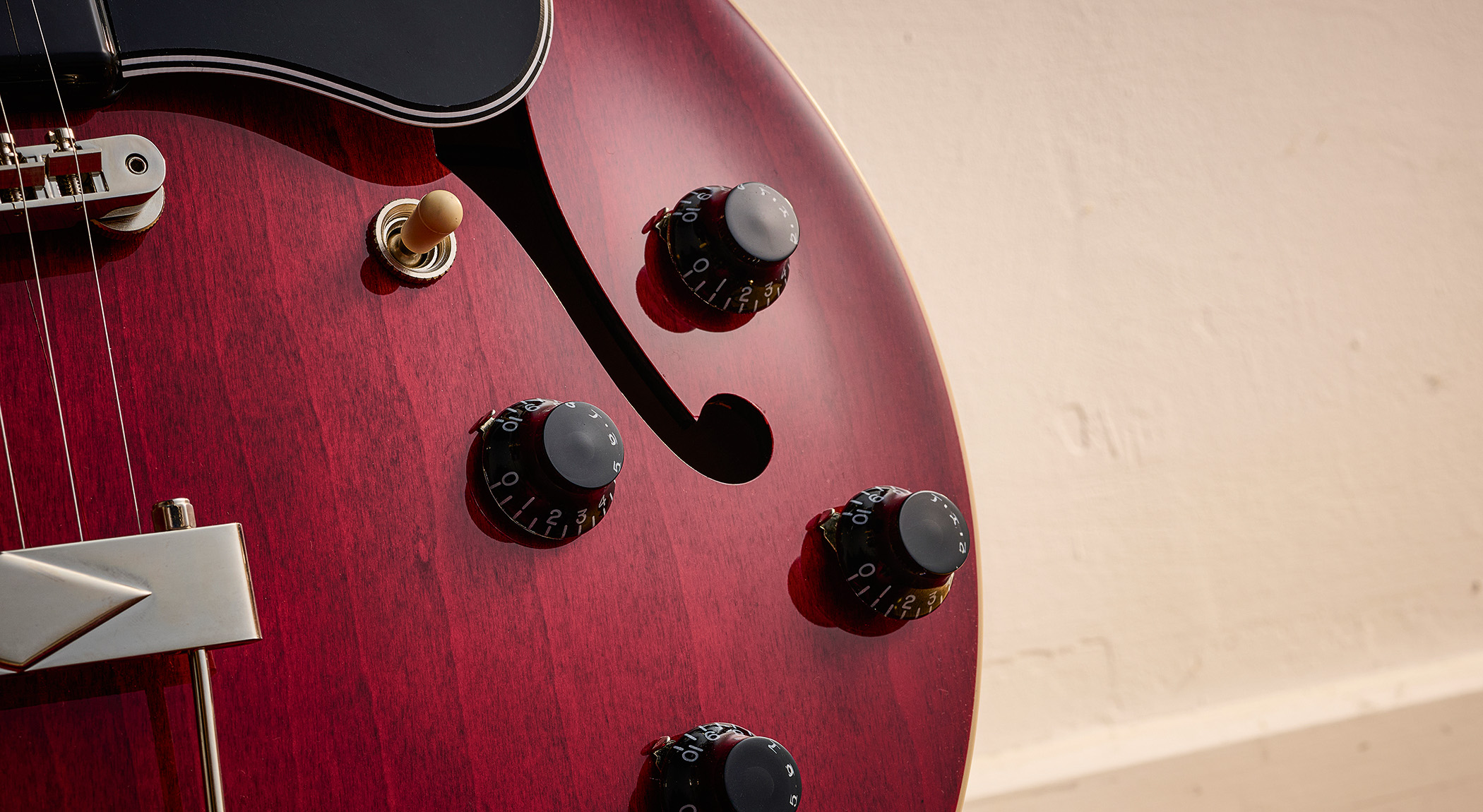
A one-piece mahogany neck is topped off by a block-inlaid dark rosewood fingerboard with 22 medium jumbo frets. Gibson sculpts the neck binding to create ‘nibs’ that cover the fret ends; when done well, as here, it’s a sophisticated solution to the age-old problem of sharp tips snagging the fingers or catching strings.
The black plasticware looks classy, offset as it is by cream binding all round save for the headstock. Hardware comprises white-button classic Kluson-style tuners, nickel-plated tune-o-matic bridge, diamond embossed trapeze tailpiece, and slightly larger than vintage‑style aluminium strap buttons.
Electrics-wise, we get a pair of Gibson dog-ear P-90 pickups mated to twin volume and tone controls with black top-hat knobs, 500kohms pots and Orange Drop capacitors.
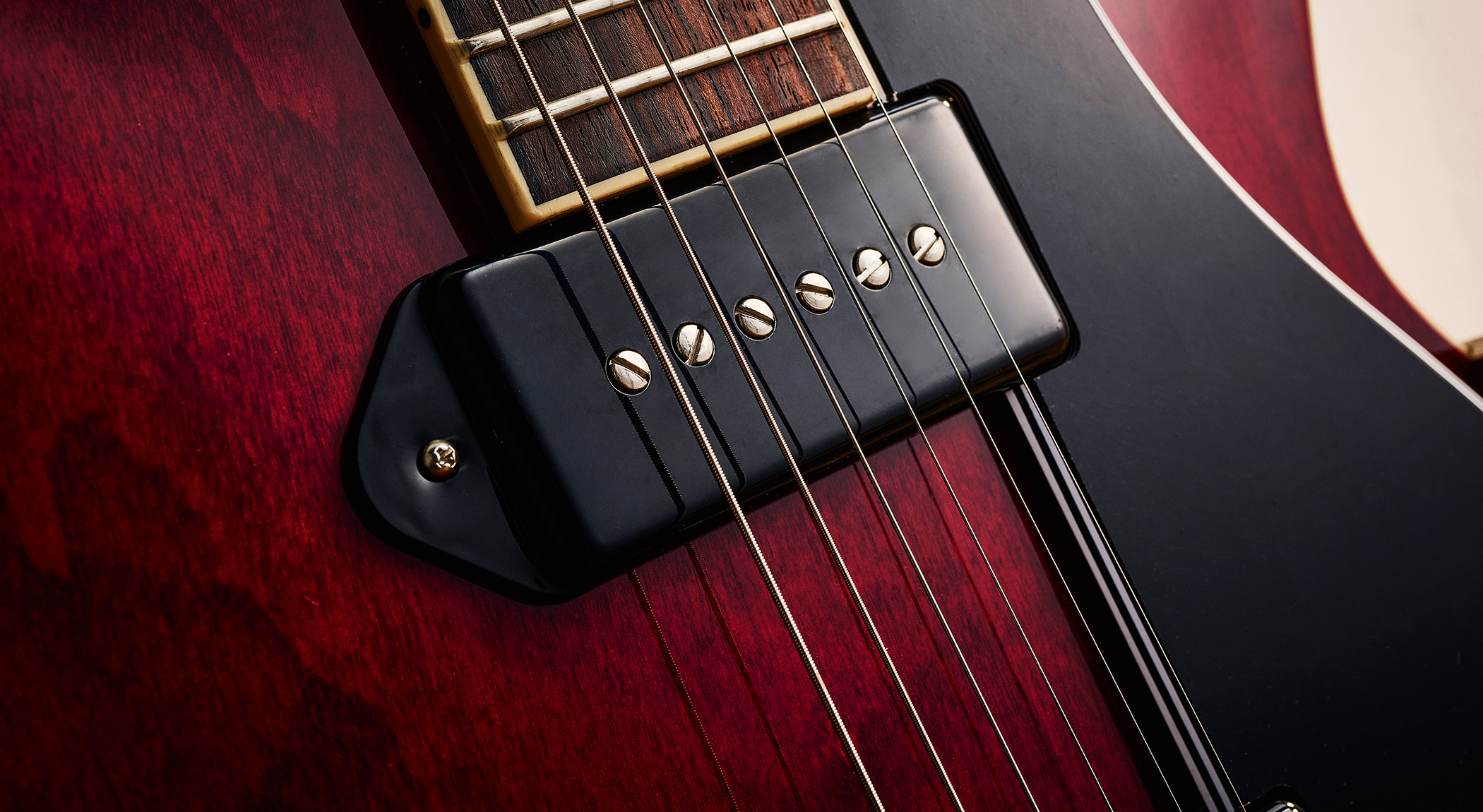
Strapping on the ES-330 reveals why it was a favourite with rhythm players (along with its sister, the Epiphone Casino) or those who majored in riffy, rock ’n’ roll style soloing.
With the neck being three frets further into the body, open chords are easy to reach, while barre shapes are a doddle up to the 12th fret. The guitar’s ultra-light weight makes it supremely comfortable, too, especially when worn a little higher on the strap.
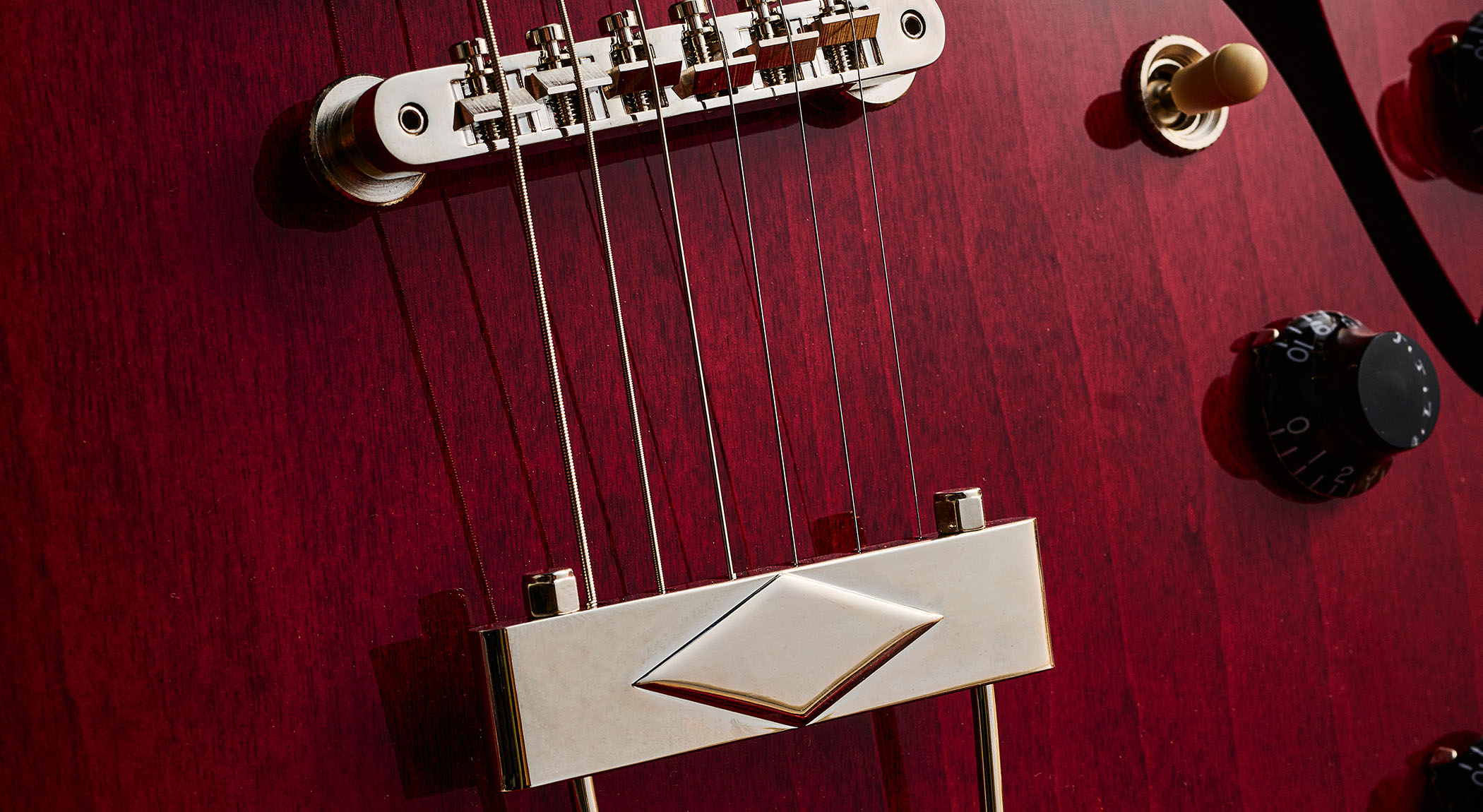
With its rounded ‘C’ profile, the neck is incredibly comfortable, and the 10-gauge strings fitted as standard feel slack and bendy.
Plugging into a Boogie Mark I reissue combo reveals a versatile set of tones that would suit almost any genre of popular music
Where some new guitars are hard and uninviting to play, this one lets you right in, to the point where you almost feel at one with the thing. No, you can’t blaze pentatonics at the 17th fret, but virtually anything else you could desire is right here at your fingertips.
Plugging into a Boogie Mark I reissue combo reveals a versatile set of tones that would suit almost any genre of popular music. Jazz, blues, pop or light-to-medium rock are all dutifully served.
Even when played clean, P-90s have a slight rasp that makes for an organic tone that, when turned right down to 2 or 3, can sound almost acoustic in nature. And with the amp set so there’s a healthy dose of drive on tap, one can go from clean to gnarly with no more than a twist of a control.
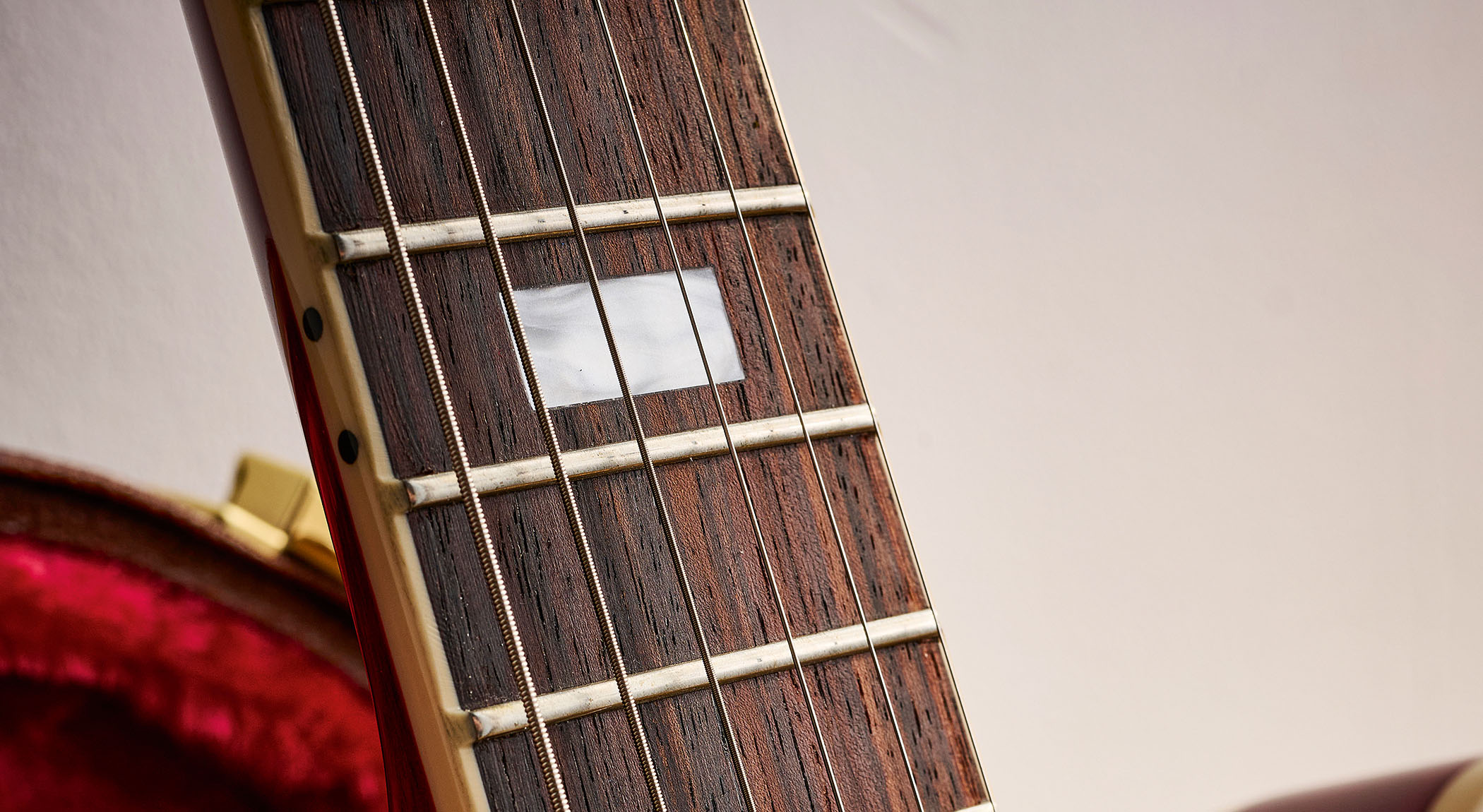
With the neck pickup on about 6 and some tone rolled off, we go from straight jazz to vintage blues, with both knobs cranked a notch or two. And flipping to the bridge pickup on about 8, with the tone all but full up, is rock ’n’ roll heaven.
Given that both B.B. King and Chuck Berry had ES-330 phases, this should come as no surprise. Both P-90s on is a fabulous choice, as balancing the controls provides an immense array of sounds.
Of course, such is the model’s and its Epiphone E-230 cousin’s association with 60s British beat music that all manner of Stones, Beatles and Kinks tones are on tap, too. And when we cranked the Boogie to gigging volume, the ES-330 didn’t feed back unless the guitar was pushed up close to the speaker. It’s quite a piece!
Gibson Les Paul Studio
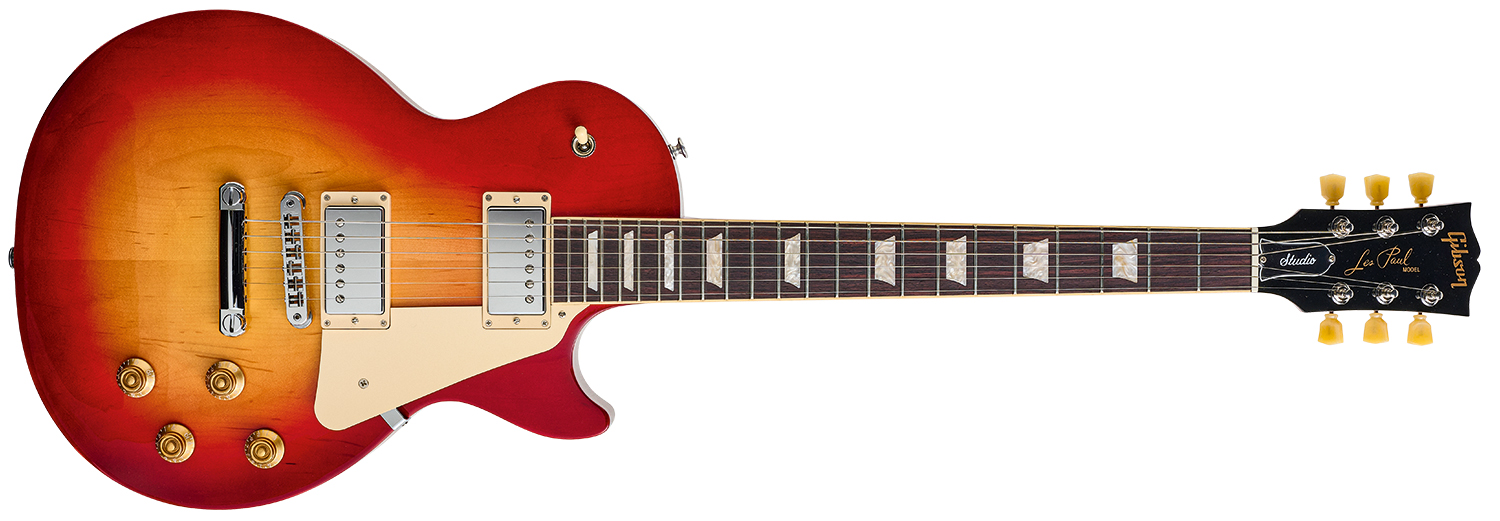
Gibson Les Paul Studio: ★★★★½
If you thought the Modern Studio was a bit too modern for your tastes with its satin finishes, compound radius ebony fingerboard, contoured heel and those new-fangled pull-switch controls, not only is this new Studio less expensive, it comes in a pretty old-school style.
It still features Gibson’s Ultra-Modern weight relief and pull-switch volumes (not tones) for the so-called ‘coil-tap’ option for both humbuckers, which here are covered Burstbucker Pros. The Modern Studio employs a covered 490R in the neck position and a 498T at the bridge.
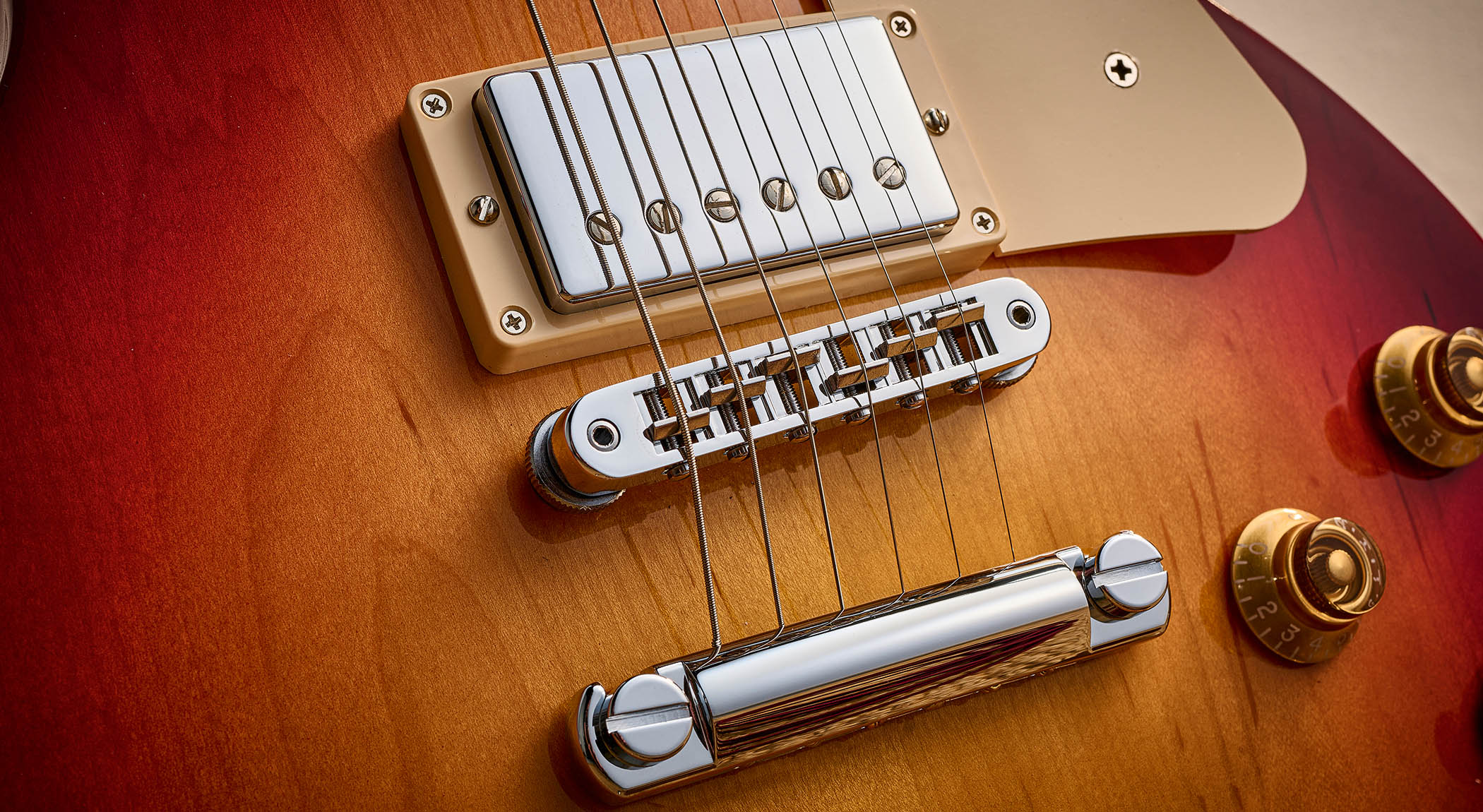
Pulling the new less-modern Studio from its very gig-ready soft-shell guitar case, that weight relief is clearly playing its part: at 3.71kg (8.16lb), it’s the lightest Les Paul we’ve hand in our hands recently, with the exception of the thinner-bodied, all-mahogany Modern Lite at 3.03kg (6.67lb); the Modern Studio was a little heavier at 3.85kg (8.47lb).
Speaking of body thickness, like the Modern Studio at just a shade over 57mm (47mm at the rim), this Studio is fractionally thinner than the full-fat Les Paul, like our reference 2019 Classic, which measures 61mm overall (50mm at the rim).
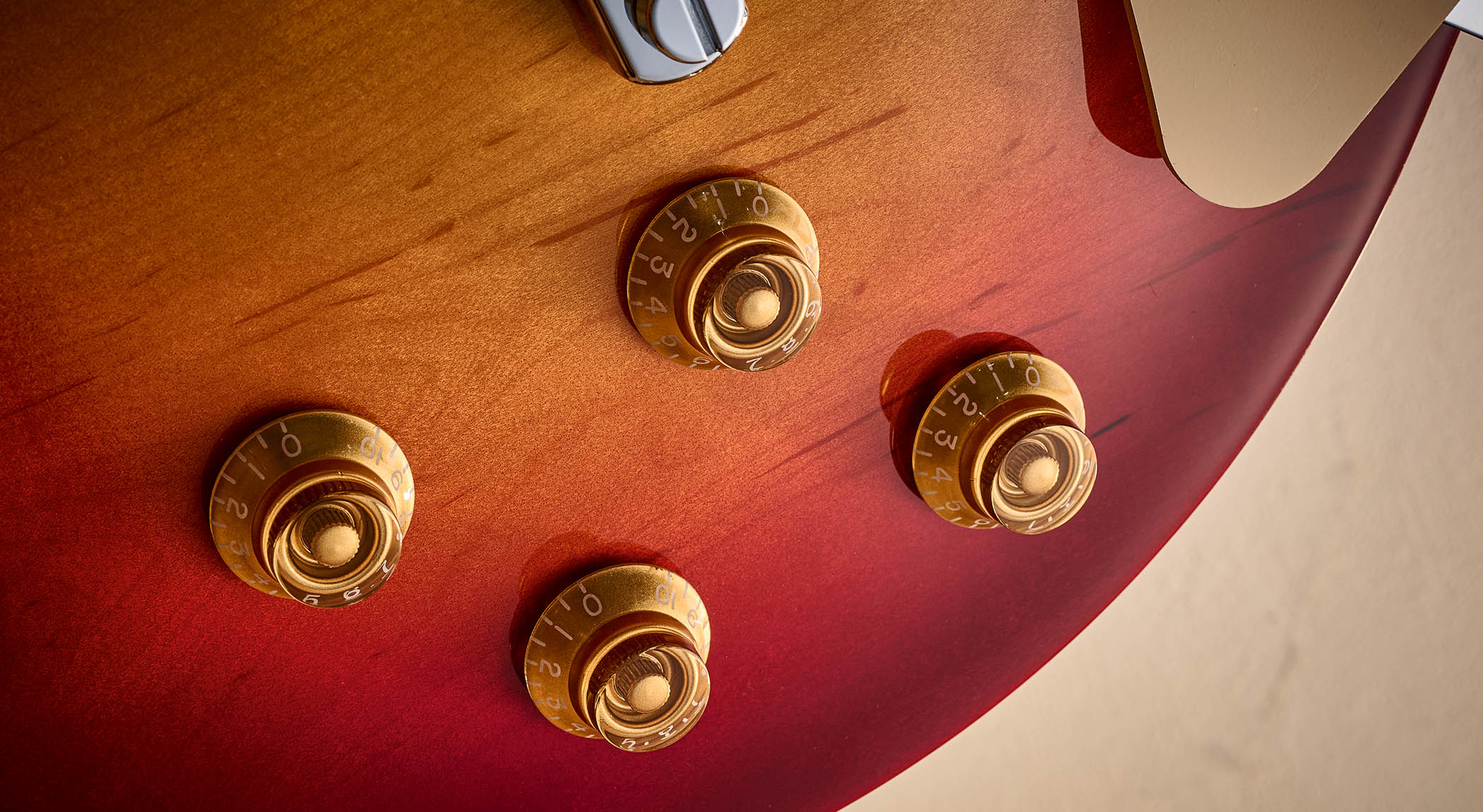
Like the Studio of old, there’s no body-edge binding, the plain top is centre-joined maple with a pretty subtle ’burst, while the mahogany back is two-piece with an offset join that’s pretty hard to see through the translucent cherry red back.
A big change, however, is the classic fingerboard binding. While the Modern Studio actually has near-invisible black plastic binding around the ebony ’board, the cream binding here, along with the classic dark rosewood fingerboard and those acrylic trapezoid inlays, not only imparts a more classic Les Paul look but also subtly alters the feel – which we’ll get to in a moment.
Let’s not forget, though, that the new Studio is half the price of the ES-330, and while there are obvious cost-cutting elements here, side by side with our Les Paul Classic – which currently costs $/£800 more – we’re not feeling short-changed.
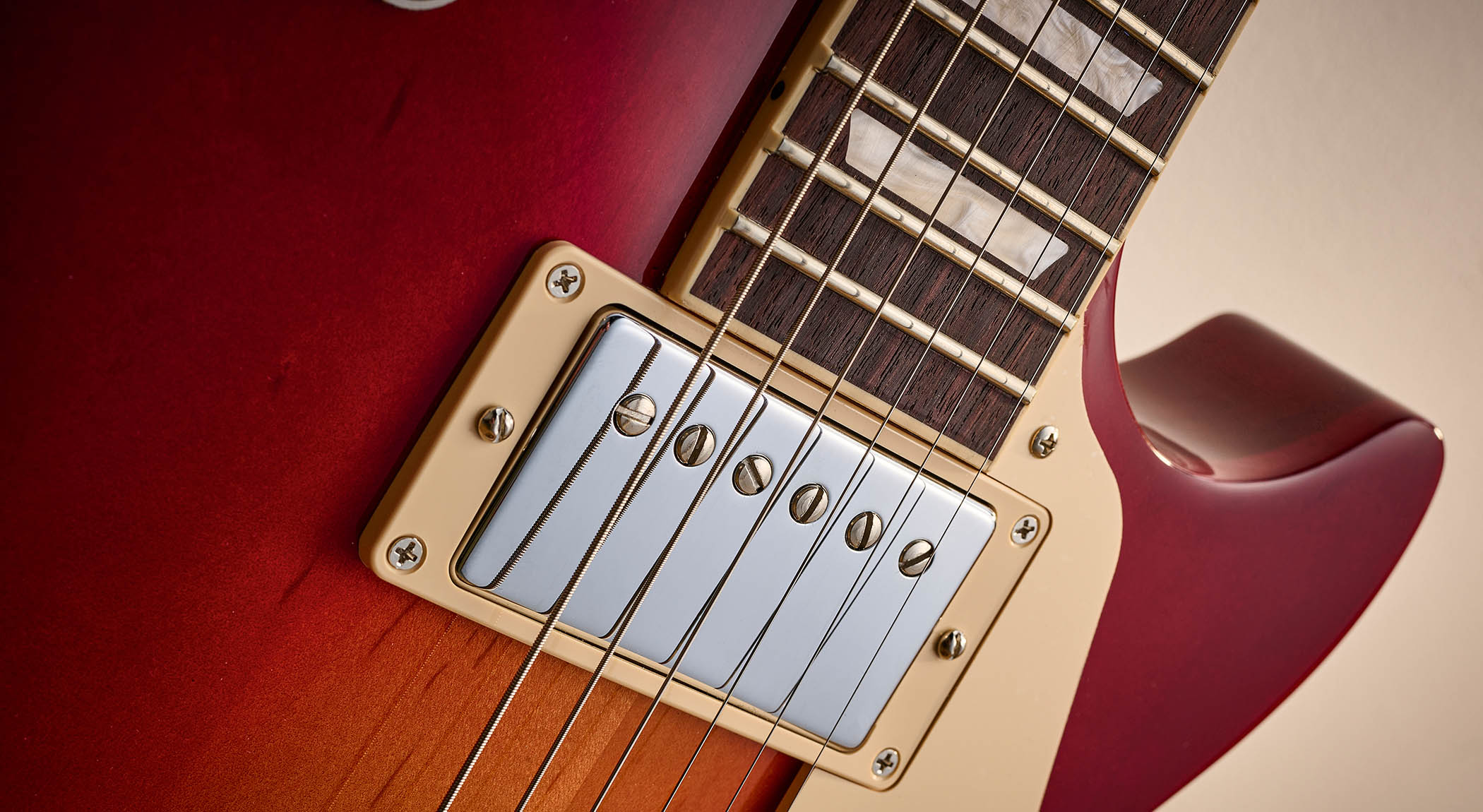
Visually, of course, the Studio’s no-body binding style won’t satisfy everyone, but from the player’s perspective you don’t notice that. You do notice the neck, of course, and with the binding here it looks and feels like a pukka ’Paul, even though there’s a slight ridge where the colour coat has presumably been scraped away during the finish process.
Along with the excellent weight, our Studio is very well set up with none of the tuning issues that have plagued some previous review samples. Typically, the frets stop at the binding, the ‘ends’ formed by the binding, and while, as we’ve said before, a slightly bigger and higher fretwire wire gauge would be preferable, it feels just like a good Gibson Les Paul should.
The similarity with the Classic is shared by the same ’60s-style SlimTaper neck, which is pretty much identical (with a nut width just a shade over 43mm, and a depth of 20.5mm at the 1st fret and 23.2mm by the 12th) and a very similar relatively full-shouldered shallow ‘C’ profile.

No surprises, then, that it sounds like a good Les Paul should, too! There’s a little more solidarity to the overall voices compared with the retrofitted Burstbucker 1 and 2 of our Classic – which also has a different nine-hole weight relief to the body – and there’s a little more clarity compared with the Studio. But it’s not chalk and cheese and, to be honest, for general rock use the Studio might have the edge for those thicker, creamier voices.
If you’re used to vintage-style wiring, the modern-wired setup here is less versatile, without those thinner, cleaner voices as you pull back the volume and tone: here, it’s simply quieter and a little darker. But for the aim, and price point, you really shouldn’t feel you’re missing anything.
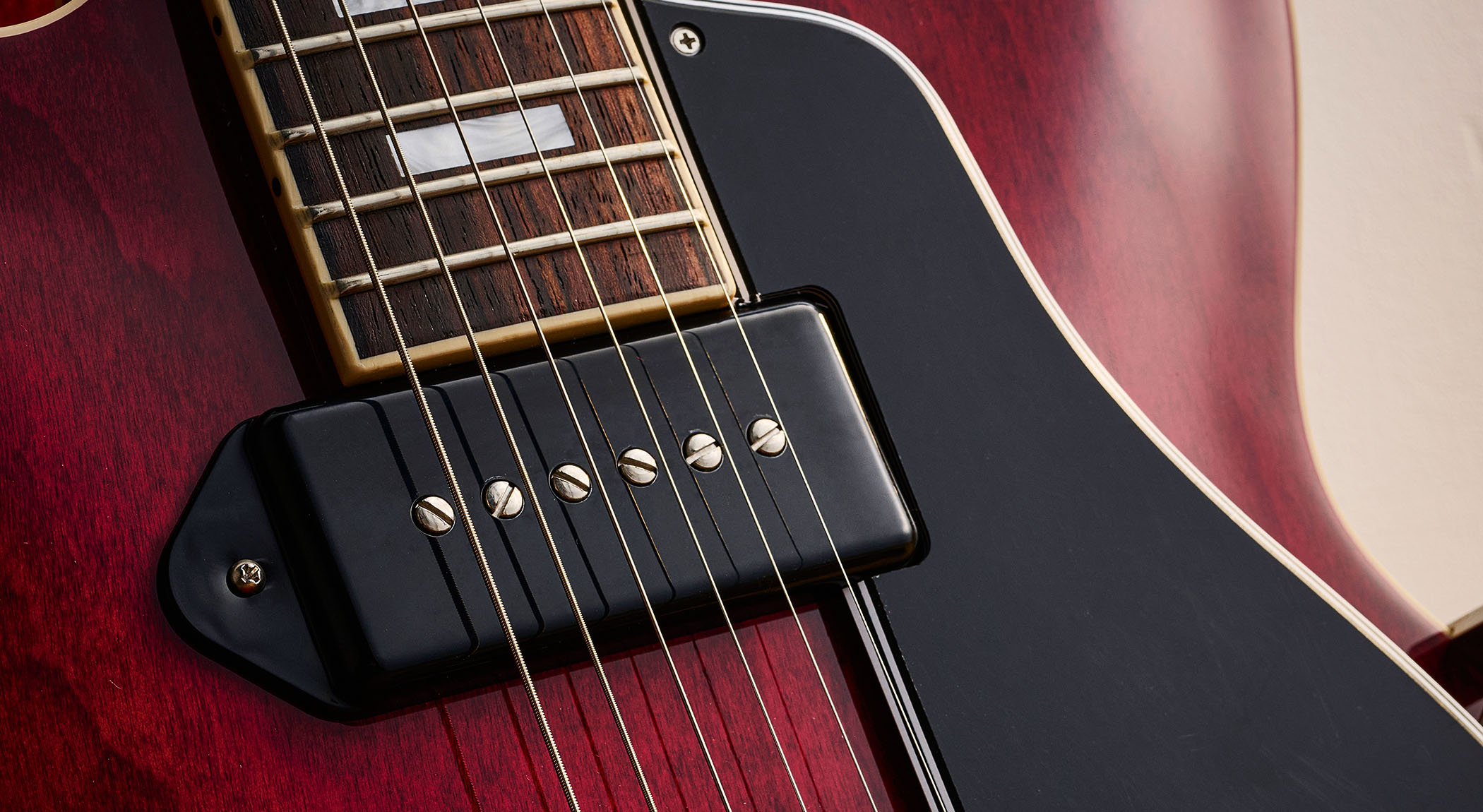
The coil-taps? Well, that’s another thing to either ignore or get used to. No, they don’t sound like simple coil-splits, but pulling up the bridge volume immediately softens the mid-forward honk for much more of a single-coil-like voice albeit with a softer high-end but without the volume drop of a typical coil-split.
At the neck, the coil-tap almost sounds a little too ‘tone control rolled off’, but again it pulls back that stridency. Listening to the Classic’s coil-taps, well, they sound different, too – a little honkier. So, while the bridge coil-tap here is definitely usable, the neck is less obviously so, not least that with the volume control pulled back, which loses a little clarity, as we said.
Verdict
We love it when Gibson gets it right, given how we’ve had cause to criticise quality control over the years, and both of these diverse pieces are very well set up with no tuning issues.
Of the recent lower-end ’Pauls we’ve played, this new Studio is very hard to argue with
The ES-330 certainly deserves another shot at the spotlight; it’s just such a usable instrument. It plays like butter and is packed with a fabulous range of recognisable tones.
True, flat out through a 100-watt Marshall stack is not particularly feasible with an all-hollow guitar, but open your mind and heart to this delightful instrument and you’ll discover a faithful musical pal for almost any occasion.
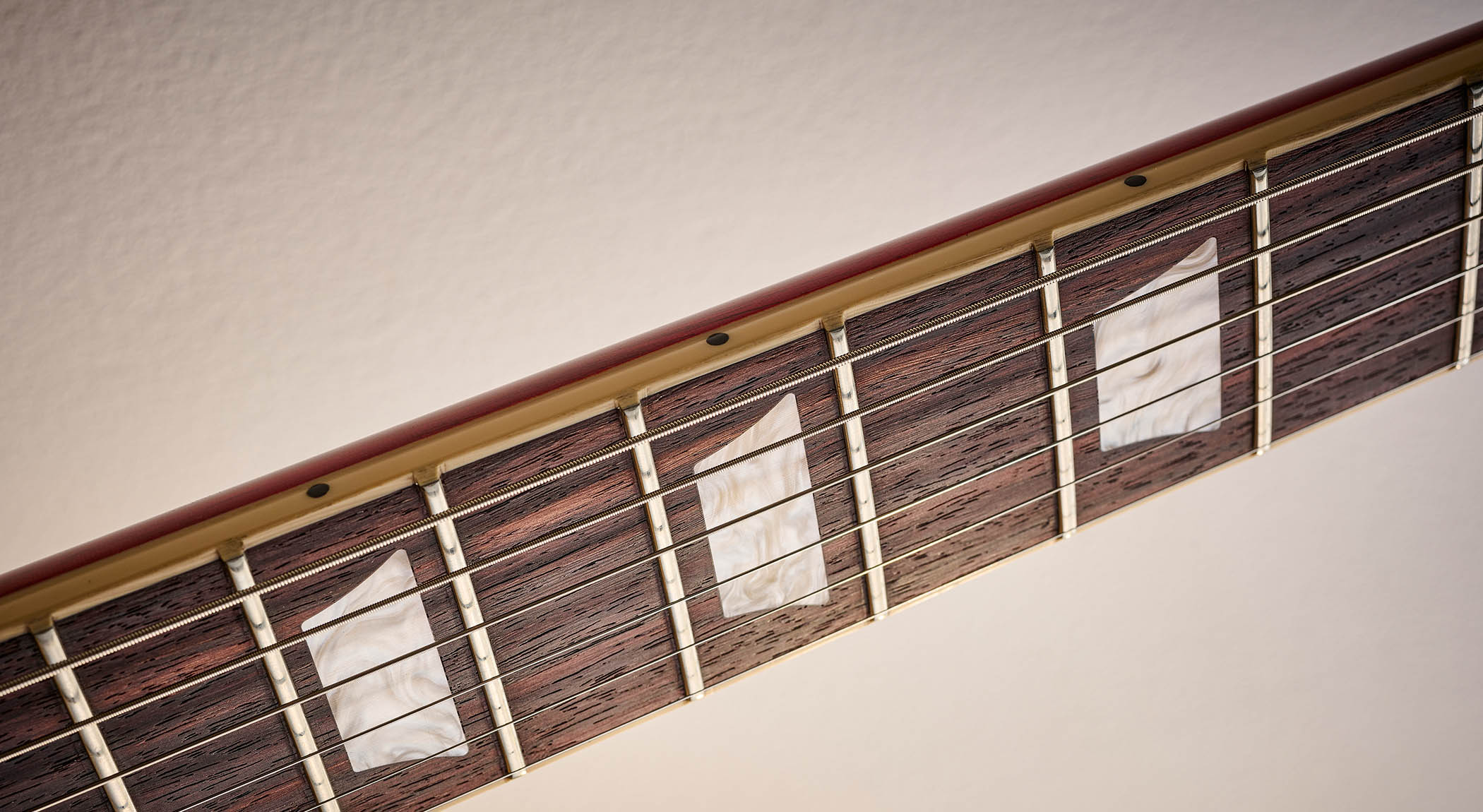
But if the ES-330 is more about restoring a classic into the catalogue, this new Studio is front-line infantry: a guitar purpose-designed to compete with the plethora of other brands’ ‘inspired by’ or copycats. Its classic big and thick voicing is archetypal Les Paul in anyone’s book, and along with a great weight there’s little to complain about.
Those coil-taps won’t be to everyone’s taste – to our ears, the bridge coil-tap has more legs than the neck – and although we don’t get the refined body binding of the upper-market models, that’s offset by the lower cost. All in, of the recent lower-end ’Pauls we’ve played, this new Studio is very hard to argue with.
Specs
Gibson ES-330
Launch price: $3,499/£3,099
Origin: USA
Type: Double-cutaway, Hollowbody electric guitar
Body: Fully hollow, cream bound maple/poplar/maple laminate top, back and sides
Neck: Mahogany, ‘rounded C’, glued-in
Scale length: 629mm (24.75”)
Nut/Width: GraphTech/ 43.1mm
Fingerboard: Bound Indian rosewood with small acrylic block inlays, 305mm (12”) radius
Frets: 22, medium
Hardware: Gibson ABR-1 tune-o-matic bridge, diamond embossed trapeze tailpiece, white-button vintage-style tuners – nickel-plated
String spacing, bridge: 51.5mm
Electrics: Gibson ‘dog-ear’ P90 neck and bridge single coils, 3-way toggle pickup selector, volume and tone for each pickup
Weight (kg/lb): 2.75/6.05
Left-handers: No
FInish: Sixties Cherry (as reviewed), Tobacco Sunburst, Antique Natural, Ebony (online only) – gloss nitrocellulose
Gibson Les Paul Studio
Launch price: $/£1,599
Origin: USA
Type: Single-cutaway, solidbody electric
Body: 2-piece mahogany with unbound carved maple top and Ultra-Modern weight relief
Neck: 1-piece mahogany, SlimTaper profile, glued-in
Scale length: 629mm (24.75”)
Nut/Width: Graph Tech/43.3mm
Fingerboard: Cream bound Indian rosewood, acrylic trapezoid inlays, 305mm (12”) radius
Frets: 22, medium
Hardware: Nashville tune-o-matic bridge, aluminium stopbar tailpiece, Vintage Deluxe tuners w/ keystone buttons – chrome/nickel-plated
String spacing, bridge: 51.5mm
Electrics: Covered Gibson Burstbucker Pro humbuckers (neck and bridge), 3-way toggle pickup selector switch, volume and tone for each pickup with pull-switches on volume controls for ‘coil-tap’
Weight (kg/lb): 3.71/8.16
Options: None
Left-handers: Not this model
Finishes: Cherry Sunburst (as reviewed), Wine Red, Blueberry Burst, Ebony – gloss nitrocellulose
Contact: Gibson
Hands-on videos
Guitarist
Guitar Center
Alamo Music Center
The Trogly's Guitar Show
The Music Zoo

Dave Burrluck is one of the world’s most experienced guitar journalists, who started writing back in the '80s for International Musician and Recording World, co-founded The Guitar Magazine and has been the Gear Reviews Editor of Guitarist magazine for the past two decades. Along the way, Dave has been the sole author of The PRS Guitar Book and The Player's Guide to Guitar Maintenance as well as contributing to numerous other books on the electric guitar. Dave is an active gigging and recording musician and still finds time to make, repair and mod guitars, not least for Guitarist’s The Mod Squad.
